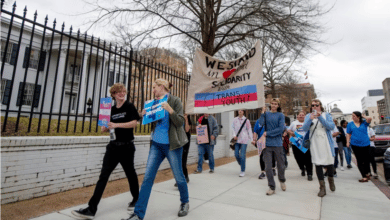A QR code to deter children from begging on Delhi streets

By Mikaela Viqueira
New Delhi, May 26 (EFE).- Powered by the motto “Bhiksha Nahin Shiksha” (No alms, only education), a nonprofit in India is seeking to discourage street children in the capital, New Delhi, from begging using a QR code technology.
The Society for Promotion of Youth and Masses (SPYM) has put up QR codes at traffic signals where beggars, particularly children, are a ubiquitous sight on Indian streets.
The nonprofit encourages people to use the QR codes, linked to a bank account, and donate to support the rehabilitation and education of more than 100 street children instead of giving them alms directly.
The novel initiative aims to ensure that, little by little, children stop begging at traffic lights because “they will not get money,” SPYM director Rajesh Kumar told EFE.
He underlined that the “whole focus is that no one should give them any money,” and instead donate it to the NGO that will provide food, education, and shelter to kids under its care.
Located on a bustling street in South Delhi, the courtyard of this colorful shelter comes to life in the afternoons, when the children return from school and form small queues to receive their meals.
Under the watchful eyes of the organization’s volunteers, the little ones sit in a circle to eat and then play or watch TV until nightfall.
But despite the facilities, a few escape during their free time to beg, especially during peak hours, when NGO members also go out seeking donations at the nearby traffic lights.
“For them, it is fun, a game and of course a way of earning money. They are earning money at the age where their parents are not earning so much money,” Kumar said.
The youngest ones earn between 6,000-8,000 Indian rupees (between $77-103) a month, enough to ensure the basic survival of a family.
The children generate sympathy, and act as a “magnet,” prompting their parents to take them for begging because they are the ones who “actually receive the money,” SPYM technical adviser Gary Reid told EFE.
“(The children) are often the only earning member of the family, so when we take them to school, we are taking away their income,” Kumar said.
Most beggars “feel that education is not going to help them,” because they think going to school is “a waste of time” and will never be able to pursue higher studies, social worker Lata Tandon told EFE.
A study published last year by the Institute for Human Development (IHD) and the Delhi government identified 20,719 beggars in the capital, of which nearly 5,000 were minors.
Tandon believes it is necessary to continue to raise awareness so that they know “how vulnerable they become when they are on the streets.”
“They can face traffic accidents, or be exploited by adults or any mafia group.”
She said it was necessary to make them realize what better alternative they had once they see “the disadvantages of begging and being on the streets.
Tandon argued that the children who approach car windows when the traffic lights turn red need to be “dissuaded and motivated to go to the institutional program.”
At a societal level, instead of giving money to beggars, “charity should be institutionalized through organizations,” the social worker said. EFE





